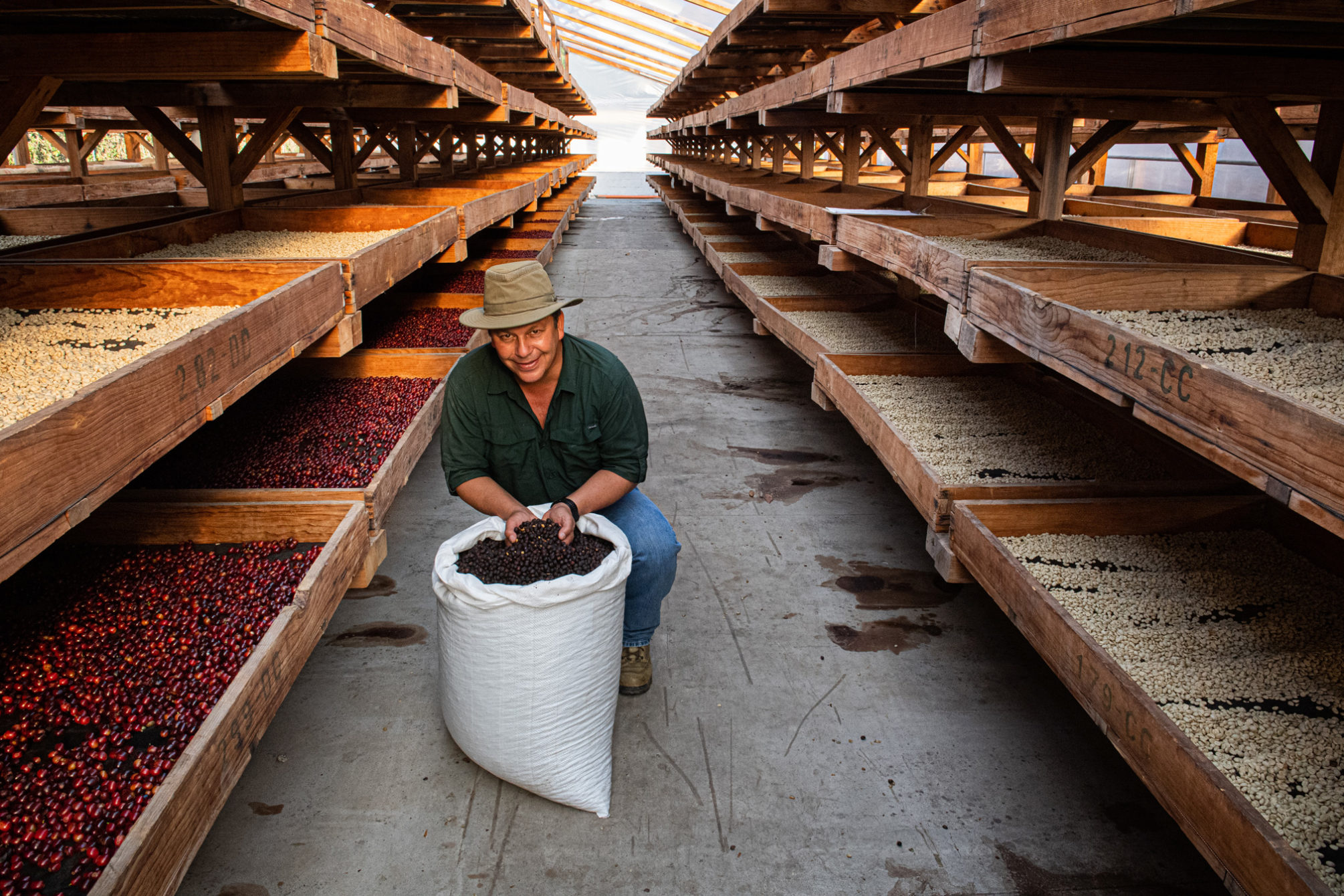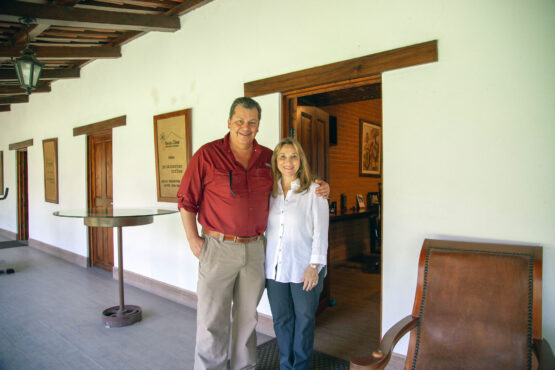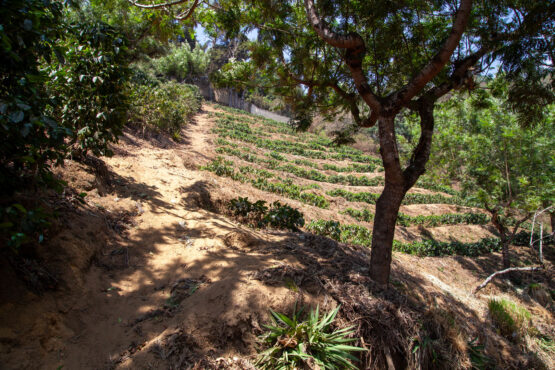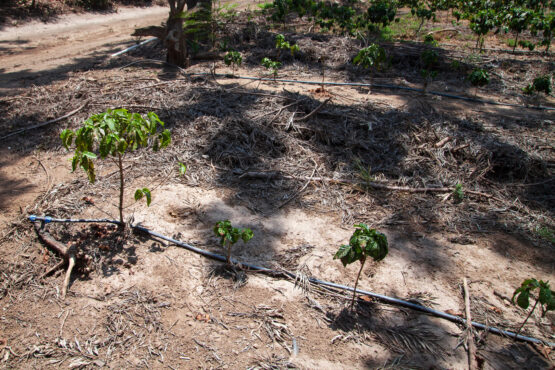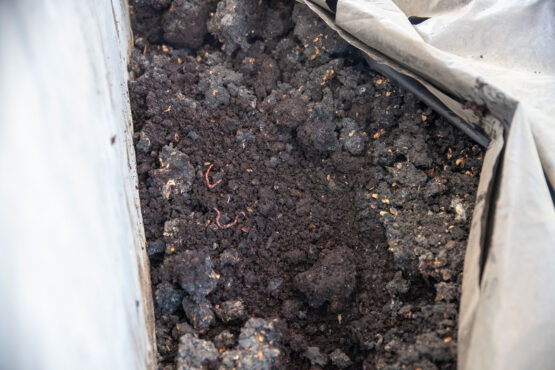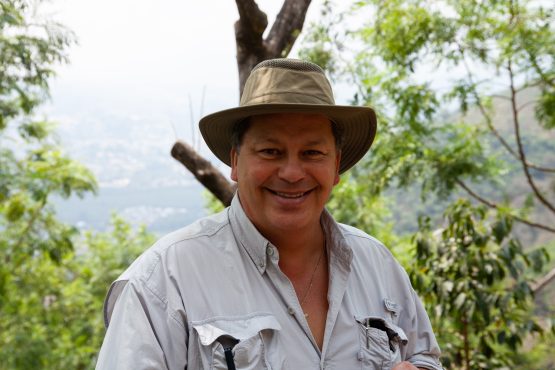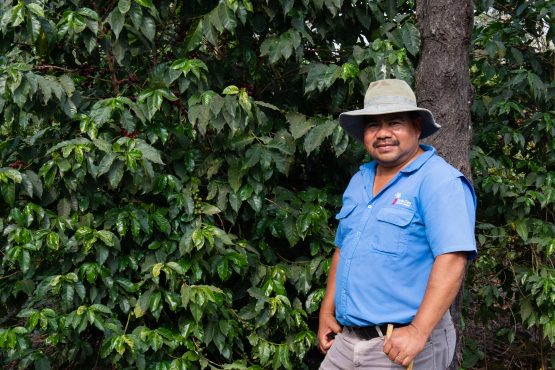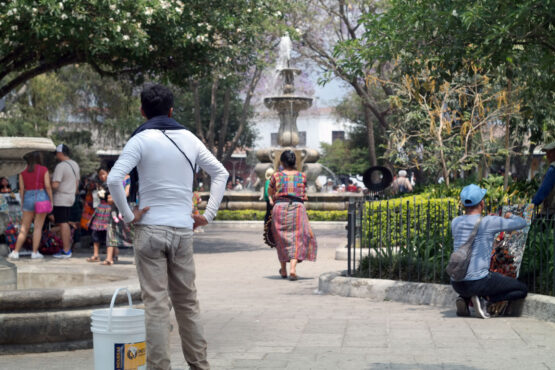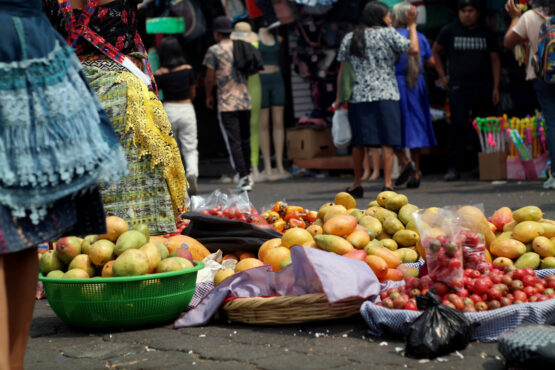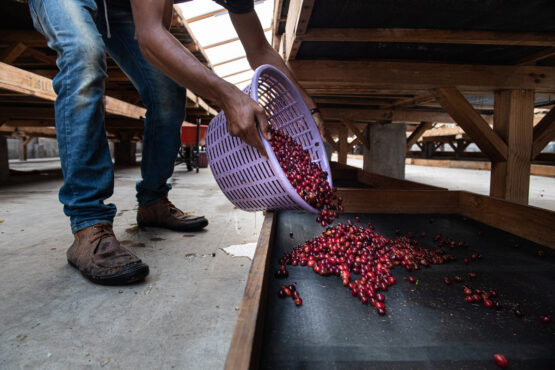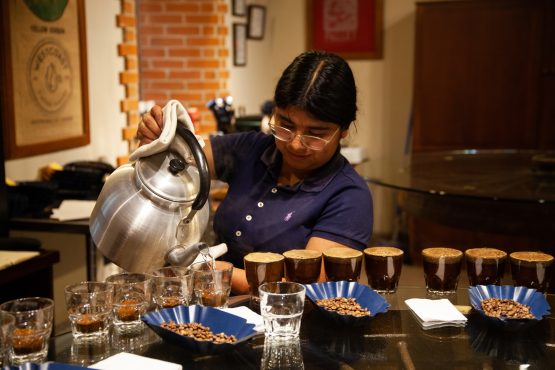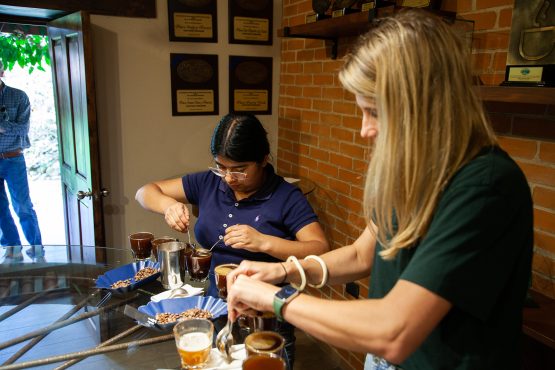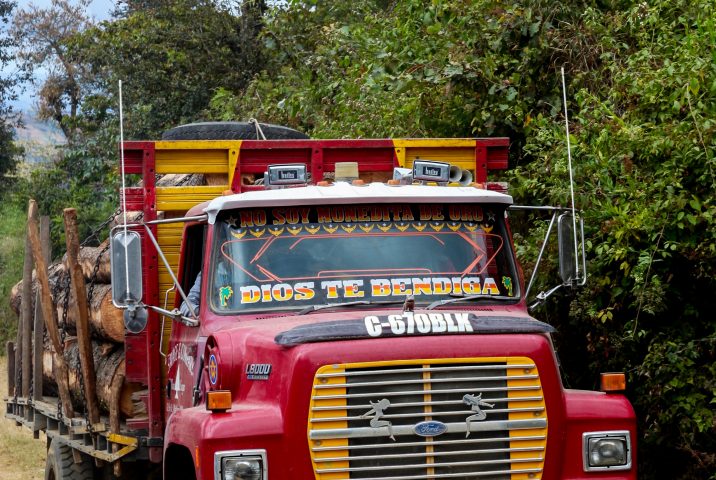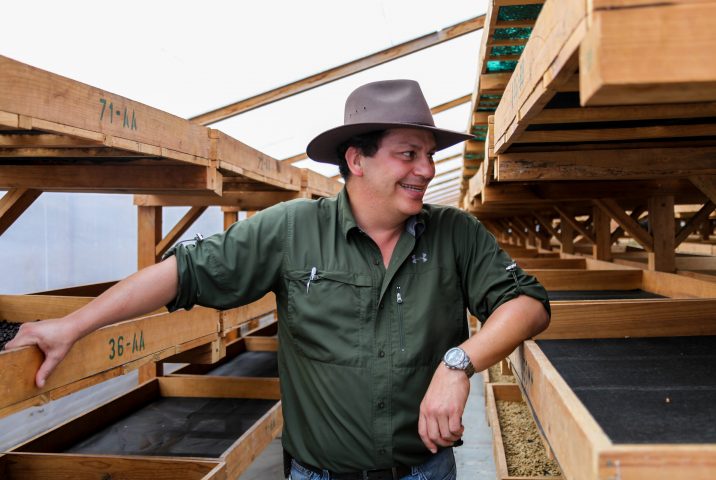Santa Clara Natural
Vibrant and winey, with creamy mouthfeel. Tropical fruits, Concord grape and milk chocolate.
This naturally processed coffee comes from Santa Clara Estate, a farm owned and managed by Ricardo Zelaya. The influential Zelaya family has been growing coffee in Antigua for more than 100 years. This renowned family owns several farms locally, and over the last century they have worked tirelessly to uphold, refine, and elevate the reputation of coffee in Antigua, one of Guatemala’s most celebrated and loved producing regions.
Santa Clara Estate is ninety hectares in size and is located on the fertile southern slopes of slopes of Hunahpú Volcano (also called Agua in Spanish) in the heart of the Antigua Valley. The farm has been owned and managed since 1988 by Ricardo Zelaya, the fourth generation of the Zelaya family to have produced coffee at Santa Clara. Back then, only the lowest elevations of Santa Clara were planted with coffee. The highest parcels were for farming corn and beans for consumption, and for the cattle and horses of neighbouring Hacienda Carmona. Ricardo then made the decision to start planting coffee higher up, increasing the farm’s yields. The process has taken years, but today the farm is one of Antigua’s most productive and is well-known for the exceptional quality of its coffee.
Ricardo is a meticulous and progressive farmer who is focused on delivering the very best coffee he can. He manages three coffee farms in Antigua: Santa Clara, Hacienda Carmona and Puerta Verde, and owns and manages a farm called Carrizal in the New Oriente coffee region. His farms are scrupulously well-managed — especially when it comes to the careful selection of varietals planted. While he prefers Bourbon and Caturra for volume, Ricardo has planted also Gesha, Pacamara, Villa Sarchi, Pacas, Borboncito and San Francisco to be able to offer differentiated microlots. This lot is 100% Bourbon. Ricardo has been working hard to perfect his naturals over the years and we have enjoyed tasting these each year and observing them become more refined in the cup. This year’s lot is no exception and we believe it is an excellent representation of everything you want from a naturally processed coffee!
Because Antigua’s climate can be quite dry, careful attention is given to plant nutrition and pruning. Since they were first planted in the late 80s, plots that lie at the farm’s higher elevations have needed some form of irrigation. Over the years, Ricardo has trialled with both sprinkler and drip systems, and has discovered that a drip system is more efficient way to ensure the plants adequately hydrated. While this has been a significant investment for the family, they recognise that it’s the most sustainable way to ensure Santa Clara Estate remains productive well into the future.
Ricardo is also passionate about sustainability. Twenty-five hectares of the estate are dedicated to natural reserve, and all of the coffee is shade-grown, which protects the plants from direct sunlight, maintains soil health, and provides an important habitat for birds and insect life. The family’s mills are also eco-friendly; all of the pulp from the mills is composted and used as an organic fertiliser for the farm, and water is channeled into sedimentation tanks in order to prevent pollution of the local river systems. In addition, parchment from the dry mill is used for fuel to reduce the reliance on wood.
Ricardo also has a big heart – leading with passion, care, positivity and a sense of humour. He has a loyal and dedicated team, and many of his staff have worked on the farm and with the family for generations. One of his longest-standing staff members is the Farm Administrator, Marcos Rompiche, who has worked for the Zelayas for over two decades and is the third generation in his family to work the land. Production is overseen by Rubén Gonzalez, who has over 20 years experience working for the family. Including Marcos and Rubén, the farm provides work for almost 70 permanent employees year-round, all of whom help Ricardo manage the processing and production of his farms. The family hires an additional 250–350 individuals during the harvest to help pick and process the coffee.
Ricardo recognises that his people are his most valuable asset “80% of the cost of coffee is labour—you need to depend on a lot of people. I think that if your people are earning a good salary, if they have good conditions and if they’re happy, then they’ll do a better job, and with more will.”
Head here to learn more about the Zelaya family’s work in Antigua.
ABOUT ANTIGUA GUATEMALA
The Antigua valley is bounded by three volcanoes – Hunahpú (also called Agua in Spanish), Chi Q’aq’ (also called Fuego) and Acatenango. Of the three, Chi Q’aq’ is the only one still active. On many visits, we have been in town at times the volcano has erupted, adding some chaos to the harvest (in the short term, the ash can stick to the leaves of coffee trees nearby and prevent the trees from photosynthesising), but ultimately providing mineral-rich ash for Antigua’s soil. This volcanic matter helps the soil retain its moisture, offsetting the region’s lower rainfall.
Coffee from Antigua is perhaps Guatemala’s best-known and most celebrated and, as such, typically attracts higher prices than coffee from other regions. They tend to be heavier bodied, with notes of dark chocolate, brown sugar and red apple. In 2000, Antigua received a Denomination of Origin to recognise the region as distinct, and to prevent other coffees from being marketed as Antiguan.
The region surrounding Antigua Guatemala is the traditional land of the Kaqchikel people, who are descended from one of Guatemala’s largest Mayan kingdoms. Their ancient capital, Iximché, is located some 50km from the Antigua valley, and was considered one of the country’s most important cities before the Spanish invasion of Guatemala. The Kaqchikel are remarkable historians, and their oral and written traditions (compiled in The Annals of the Kaqchikel) have been an important resource in preserving the cultural heritage of many of Guatemala’s indigenous communities.
HOW THIS COFFEE WAS PROCESSED
Every cherry at Santa Clara is hand-picked when perfectly ripe, and then sorted by hand before being inspected by the quality control manger at the wet mill. This special micro-lot has been hand-picked by special pickers, who are employed and paid higher wages specifically for their skill at selecting only the ripest and most perfect cherries. The method of ‘special’ picking is one that the Zelayas have used to great effect in the lots that they submit to the Cup of Excellence competition. They’ve recently begun to expand their offerings of lots, such as this one, that utilize the same method of picking.
On the same day that they were picked, the fully ripe cherries were washed thoroughly in the receiving tanks, and additional water was passed over them to remove any traces of dirt. They were then left in this tank overnight. The next day the cherries were taken through the washing channels to ensure there were no floaters, and then transferred directly to the African beds inside the greenhouse where they were turned every thirty minutes initially, and then as the beans dried out this was increased to every fifteen minutes to ensure uniform drying. Drying took around twenty-one days to reach the desired moisture level.
Once dry, the coffee is rested in parchment until it is ready for export. It is then milled at Ricardo’s dry mill which is located on the farm. The management of this meticulously run mill is overseen by a talented team who carefully monitor every stage of milling to ensure high-quality expectations are met. Throughout the process, Ricardo also ensures that all organic by-products are recycled and reused.
Ricardo recently upgraded the dedicated lab on his property and has a QC team focused on analysing every single lot produced on the farm. Flor Ventura, a Santa Clara Scholarship Fund participant and coffee school graduate, heads up the QC program and is in charge of all of the roasting and cupping. Each day lot is cupped and scored prior to blending and the findings are used to inform improvements in harvesting and processing.
WHY WE LOVE IT
We have been fortunate enough to have been buying and representing Santa Clara since 2008, and we feel so incredibly lucky to work with such a remarkable family and coffee.
One of our favourite moments when visiting the farm was seeing an amazing video that the staff had produced as a surprise for Ricardo and his family to show their gratitude. It was presented at their Christmas party (an annual event to which all of Santa Clara’s workers and families are invited to dance and eat lots of yummy food). You can watch here (we can’t encourage you to watch this enough—it will make you smile!).
